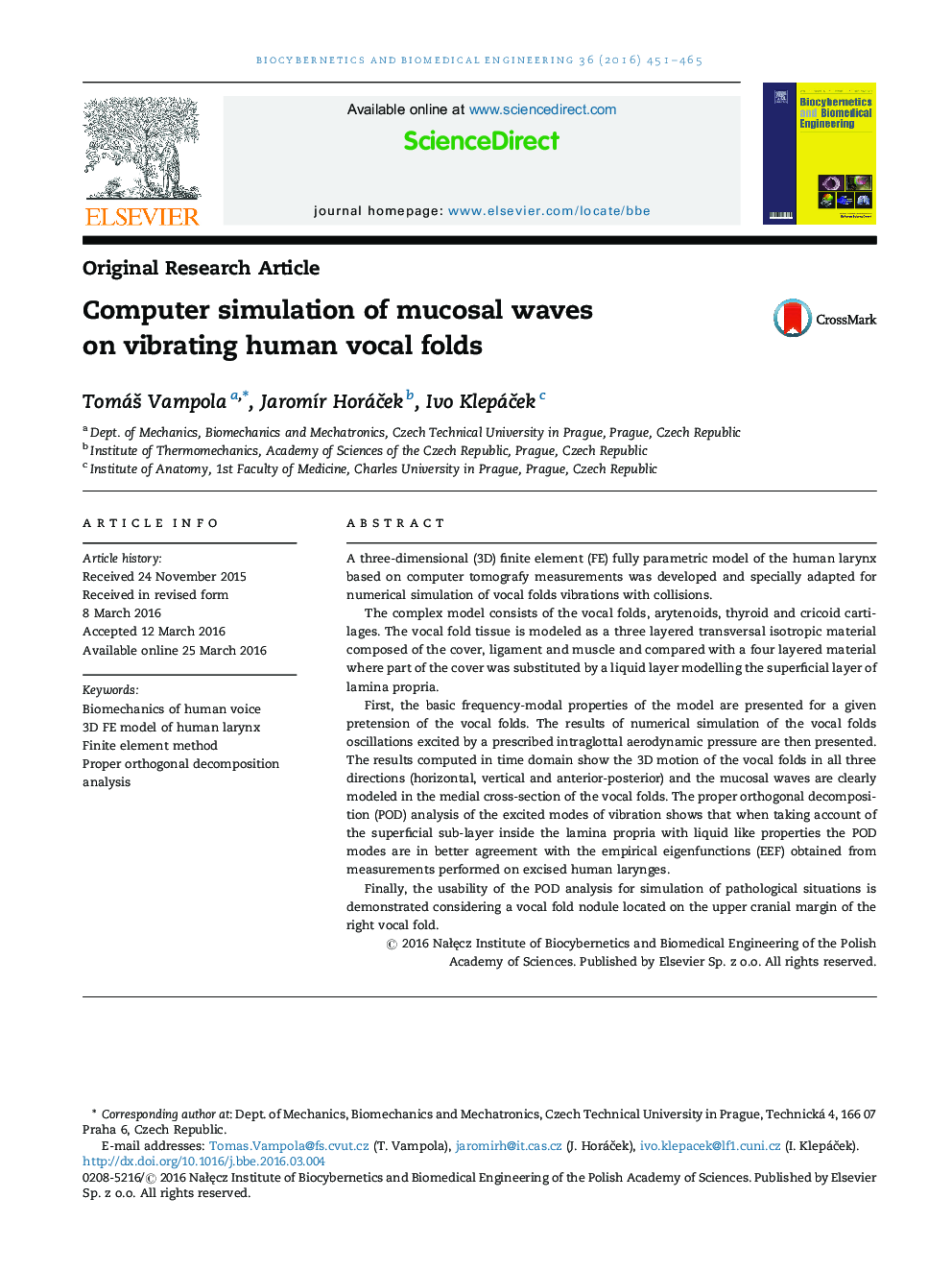| کد مقاله | کد نشریه | سال انتشار | مقاله انگلیسی | نسخه تمام متن |
|---|---|---|---|---|
| 5133 | 342 | 2016 | 15 صفحه PDF | دانلود رایگان |
A three-dimensional (3D) finite element (FE) fully parametric model of the human larynx based on computer tomografy measurements was developed and specially adapted for numerical simulation of vocal folds vibrations with collisions.The complex model consists of the vocal folds, arytenoids, thyroid and cricoid cartilages. The vocal fold tissue is modeled as a three layered transversal isotropic material composed of the cover, ligament and muscle and compared with a four layered material where part of the cover was substituted by a liquid layer modelling the superficial layer of lamina propria.First, the basic frequency-modal properties of the model are presented for a given pretension of the vocal folds. The results of numerical simulation of the vocal folds oscillations excited by a prescribed intraglottal aerodynamic pressure are then presented. The results computed in time domain show the 3D motion of the vocal folds in all three directions (horizontal, vertical and anterior-posterior) and the mucosal waves are clearly modeled in the medial cross-section of the vocal folds. The proper orthogonal decomposition (POD) analysis of the excited modes of vibration shows that when taking account of the superficial sub-layer inside the lamina propria with liquid like properties the POD modes are in better agreement with the empirical eigenfunctions (EEF) obtained from measurements performed on excised human larynges.Finally, the usability of the POD analysis for simulation of pathological situations is demonstrated considering a vocal fold nodule located on the upper cranial margin of the right vocal fold.
Journal: Biocybernetics and Biomedical Engineering - Volume 36, Issue 3, 2016, Pages 451–465
